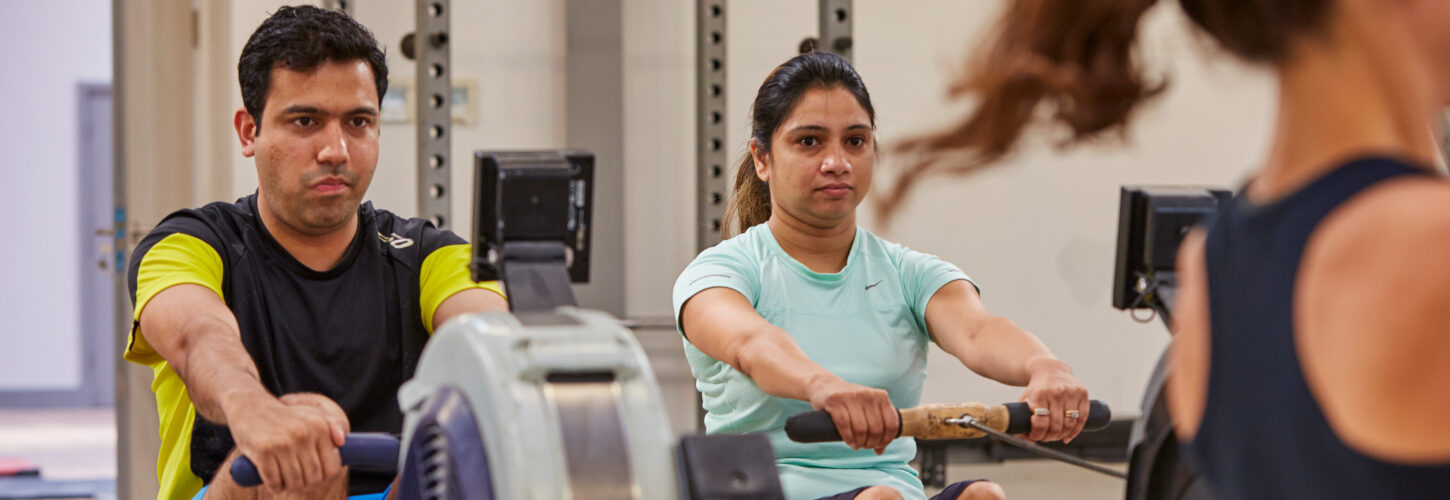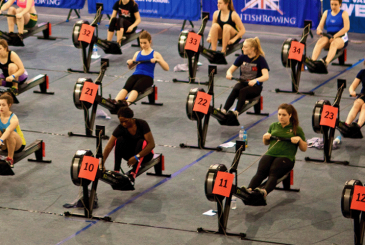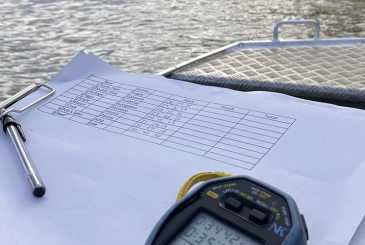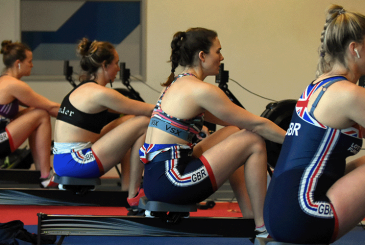Rose Crawford from Junior Rowing News outlines seven great workouts for you to try on the rowing machine whenever you can’t get out on the water
Those of us not lucky enough to be able to train on the water during the winter become very familiar with the rowing machine. Here is a compilation of some of the best and most testing workouts to help you get through the winter months.
Workout 1# – 30 minutes at stroke rate 20
This is probably my favourite rowing machine workout out of the big three – 2K, 5K and 30 minutes. I know it is the longest, but with some good music and a good rhythm, it is the most bearable. Also, if you do this workout with other people, you will all finish at the same time, unlike the distance ones, so no one is still going at the end by themselves.
Pacing is key for this one, as is mental toughness. You can also mix this workout up by doing the first 10 minutes at rate 18, the second 10 minutes at rate 20 and the last 10 minutes at rate 22, which makes it a little easier for pacing. As you are coming into the last 10 minutes, the slightly higher rate helps to lower your split.
Workout 2# – 5K at stroke rate 26
This is arguably the toughest winter rowing machine workout – it’s a solid testing distance for rowers at all levels, as well as for any potential GB junior triallists.
Personally, I always find keeping the stroke rate up for the full 5K the most challenging part after months of long, low-rate workouts.
Workout 3# – 2 or 4 x 25 minutes UT2 with 90 seconds of rest
If you’ve been using the machine for a little while, then the next few sessions are a great way to improve your fitness even further.
This rowing machine workout might seem daunting as it is so long, but break it down and it becomes more friendly.
It helps to change rates every five minutes in a pyramid eg 16|18|20|18|16 or 22|20|18|20|22. Additionally, if doing 4 x 25 minutes, the second and fourth intervals can be on a bike, which makes it much more manageable.
“This workout is very useful for anaerobic threshold training, and I believe it did help improve my 2K time”
UT2 training
UT2 training will help build aerobic capacity by working at intensities between 65 and 75% of your maximum heart rate. In other words, you should be able to hold a conversation as you train in your UT2 zone. Find out more here.
Workout 4# – 6 x 10 minutes UT2 with 60 seconds of rest
Similar to the previous session, but the intervals are much shorter. This makes the workout more manageable, but you still get the same physical benefit. Many coaches see the value of UT2 workouts, so it is natural that, over the winter, they make up the bulk of sessions.
Workout 5# – 3 x 2K, 5 minutes rest
Moving onto some of the tougher workouts, 3 x 2K has to be one of my least favourite rowing machine sessions.
I always find it very difficult to be consistent overall and in each piece. It’s a challenge to have the mental toughness to push harder as it gets tougher. Despite this, this workout is very useful for anaerobic threshold training, and I believe it did help improve my 2K time.
“This one helped me get through lockdown earlier this year”
Workout 6# – 6 x 1500m, alternating between stroke rate 24 and 26
Another chance to up the stroke rate during the winter with slightly shorter intervals, making it slightly easier, mentally, than 3 x 2K. The rate-changes between pieces help to keep the session fresh and prevent it from becoming a slog. However, this is still one of the more challenging winter workouts, due to the lactate build-up.
Workout 7# – 60 minutes of UT2 intervals
This is probably one of my favourite sessions that we do at my club. It consists of 4 x 4 minutes with 2 minutes’ rest, then 4 x 3 minutes with 90 seconds’ rest, then 4 x 2 minutes with 1 minute rest and then 4 x 1 minute with 30 seconds of rest, all UT2.
I really enjoy this one because the intervals are much shorter, and you get the longer intervals out of the way first. This one helped me get through lockdown earlier this year, despite the fact it can feel like a long way out from home at the beginning. The intervals help break it down and add variety.
Photo: Simon Way










